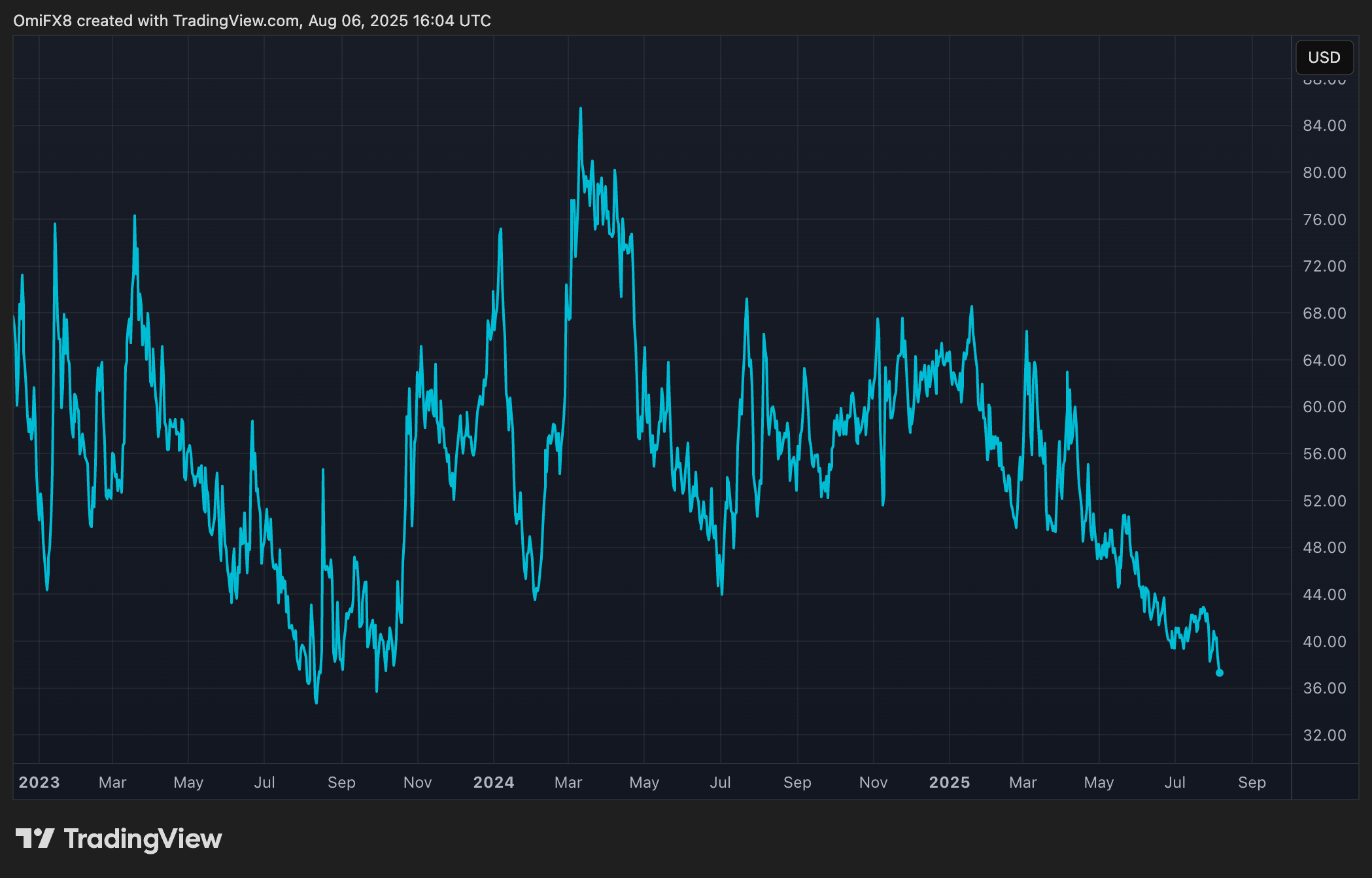Bitcoin’s Volatility Craters to October 2023 Lows – Is the Calm Before the Storm?
Bitcoin's price swings have flatlined to levels not seen in nearly two years—and the crypto markets are holding their breath.
The silence is deafening
No wild 10% daily swings. No panic-selling flash crashes. Just eerie, un-Bitcoin-like stability since October 2023. Traders are either bored or terrified.
What the charts won't tell you
This could mean institutional adoption is finally smoothing out the bumps. Or that whales are accumulating before the next pump. (Spoiler: Wall Street always knows first.)
The cynical take
Enjoy the tranquility while it lasts—the suits haven't finished front-running the next retail frenzy yet.

The same thing can be said about stocks, where the VIX index has reversed Friday's spike from 17 to 21. The VIX measures the 30-day implied volatility in the S&P 500.
BTC mirrors stock market volatility patterns
BTC's implied volatility has been in a months-long downtrend, moving in the opposite direction of the cryptocurrency's price, which has surged from $70,000 to over $110,000 since November.
The negative correlation marks a profound shift in bitcoin's market dynamics. Historically, BTC's volatility and its spot price moved in tandem, with volatility rising in both bull and bear markets.
The change in this spot-volatility correlation is attributed, in part, to the growing popularity of structured products that involve the writing (selling) of out-of-the-money call options, analysts told CoinDesk.
This new dynamic suggests that Bitcoin is increasingly mirroring patterns on Wall Street, where implied volatility often dwindles during steady bull runs.

